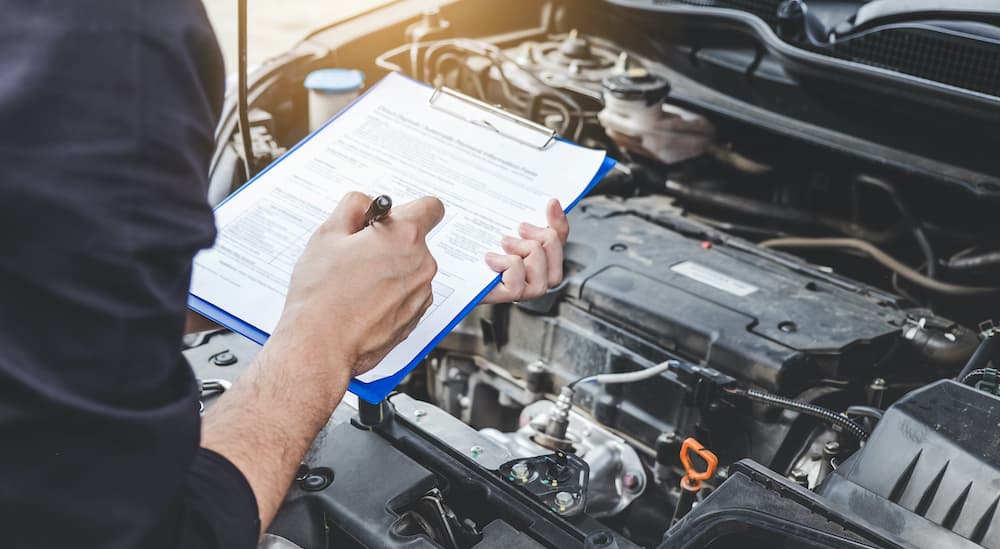There’s a lot of different ways to maximize the value you get when shopping for a vehicle. At the extreme ends, you can buy from used car dealers, private sellers, and auctions for some of the cheapest cars out there or buy something brand-new, trading depreciation losses for the highest reliability possible. Besides leasing, though, there’s a couple of good and very popular options in the middle. Used cars from a new car dealership provide a good value since you can count on them to be in good shape when you buy them while still paying relatively little. The best value overall, though, has got to be manufacturer certified pre-owned vehicles, which have used car prices and extended factory warranties for near-new car reliability. The trick is to choose a make that has a good CPO program, and you won’t find a better deal on an American car than at your local certified pre-owned Chevy dealer!
I say that because Chevy’s CPO program is one of the best, period, especially among American manufacturers – and it applies to GMC/Buick as well! Not only are the benefits excellent (adding up to $2600 in value, justifying the increased cost vs a typical used car), but they’re applicable to a huge range of vehicles, and they include some peace-of-mind features that you won’t find elsewhere.
Every Inspection Is a 172-Point Blowout
I think what’s superb about a CPO car is that the manufacturer basically mandates the dealer to ensure the car is in near-factory condition and backs it up with warranties that are occasionally better than those for new cars. You still get the savings of a car that’s a couple of years old, has suffered the huge initial hit of depreciation, and has made it through its break-in miles, but without the risk inherent to purchasing a 10-year-old, 100,000-mile car. Consider what Chevy includes in their regimen before slapping a CPO sticker on:
Basic History
A CPO vehicle must meet certain age and wear requirements before being considered for the program – in Chevy’s case, that’s a maximum of 6 model years and 75,000 miles. It also must have a clean title (meaning that it’s never been wrecked and written off by insurance, then repaired) and must pass its vehicle history report from CARFAX, which is available for all vehicles that are accepted into the program at no charge.
Inspection
Before they dig into the deep dive inspection, technicians check for things like aftermarket modifications, a missing manual, or issues with the vehicle’s history, taking a step back to reconsider if any red flags come up in the initial background check. They’ll execute due diligence to ensure it’s worthwhile to proceed because of the intensity of what comes next.
Once a car is deemed worthy of consideration for the CPO program, the inspecting technicians get busy, executing a 172-point inspection and servicing any component which fails the standard of the check. That starts with 17 routine maintenance items to ensure filters and fluids are a-o-k, plus 6 tire and brake checks to guarantee that you’ll see reasonable service life from each. 8 interior and 5 exterior detailing tasks – that is, a meticulously thorough cleaning and restoration – are then completed before the road test, where the inspector verifies the performance of 34 systems across the engine, transmission, HVAC, steering, chassis, and more.
They’ll check the functionality of 13 additional safety, security, and weather sealing components, then test the performance of 9 systems in the engine bay for signs of wear. There are 18 points to check underneath the vehicle to verify that the suspension and powertrain are in good shape, then a full 48 interior and 24 exterior checkpoints to ensure that the condition and operation of every feature are exactly as intended. An additional 5 checks are reserved for hybrid powertrains as well for a total of 177 inspection points, accepting no substitute for ensuring that every CPO vehicle meets factory standards when it leaves the lot.
Total Recall(s)
As a final line item, the dealer certifies that they’ve completed all open safety recalls for the vehicle in question. After all, the last thing you want to do is drive a car off the lot – one which has just passed a 172-point inspection – and suffer the consequence of an open recall before you even get it home! GM still advises buyers to verify for themselves which recalls have been issued for the vehicle in question and to confirm that the recall services have been performed on the car, but in most cases, you’ll only get reassuring answers.
Getting What You Pay for With Chevy CPO
Most of the time, you’ll probably find that a CPO vehicle is more expensive than a typical used car. This is very true if you’re comparing ineligible models, those nearing 10 years of age, 100,000 miles or more, etc., to the CPO class. However, in a quick comparison I did on one dealer’s site, I found that the average 2020 CPO Chevy Malibu LT was about $500 cheaper than non-certified examples of the same car!
The point is, take everything about price with a grain of salt. If you’re comparing apples to oranges, so to speak, you’re likely to ask yourself why you should pay more for a CPO car. But if the price difference is in the neighborhood of $2600, you can almost call it a wash since the CPO version of a Chevy comes with additional protections that are worth that much money! For starters, you get the CARFAX report and some neat subscription features, similar to the options available on new cars, like 3 months of OnStar and SiriusXM satellite radio (even extending to phone-controlled remote start and door locks if so equipped).
A 2 year/24,000 mile scheduled maintenance program, which covers two oil and filter changes, tire rotations, and more multi-point inspections, is standard fare like it is for many new cars. You also get a 12-month/12,000-mile bumper-to-bumper limited warranty and a 6-year/100,000-mile powertrain warranty from the original in-service date of the vehicle. This also includes 24-hour roadside assistance in case you run into trouble. Getting that kind of warranty on a new American car is pleasant enough, but on a pre-owned vehicle, it is nearly inspiring!
I say nearly because, frankly, nobody comes close to Hyundai/Kia warranty value. But GM provides something with their CPO program that the competition does not – a 3-day / 150-mile exchange program, letting you return your car for a different one. In their demo video, GM explains that having a change of heart when it comes to your favorite color is reason enough to go for the swap, although some limitations apply depending on the dealer. Still, it’s the kind of benefit you hear about with online dealerships looking to drum up confidence and don’t associate with brick-and-mortar dealerships, but not when it comes to Chevy CPO!
A Grand Package
The best part is that the Chevy CPO program applies to all Chevy models. So sure, you’ll easily find CPO Malibu sedans and Equinox crossovers, but you aren’t limited to those mainstream designs. Take an example I found at a certified pre-owned Chevy dealer in the Atlanta region – a 2019 Chevy Corvette Grand Sport!
There are so many special things to note about this car that it deserves its own series of blog posts. Suffice to say; it’s no ordinary ‘Vette. 2019 was the final model year of the C7 generation, making this one of the last front engine Corvettes. Being a Grand Sport model (a moniker used sparingly throughout Corvette’s history) only adds to that prestige. The aptly named Grand Sport is a hybrid of the high-performance Z06 and the standard Stingray, using the naturally aspirated base V8 engine but the performance-oriented mechanics, technology, and bodywork of the Z06 to slot somewhere in the middle on the pay and performance scales.
This one was in black 2LT trim, a mid-level that decks the interior in high-end features like a HUD and fully dimmable lighting and infotainment, with a couple of appearance options selected and an 8-speed automatic transmission. That might sound like a bummer, but Car and Driver found it to be quicker than the manual, so to each their own. Want to know how it was priced compared to brand-new? I gave it a shot just for fun.
Chevy’s online builder still lets you configure a 2019 Corvette Grand Sport, which I did, coming to an estimated price of about $75,000 – a figure which would surely be much higher in the reality of today’s market. The certified pre-owned real-life Grand Sport – one of the last of its kind and in a highly desirable daily-driver-friendly package, with under 22,000 miles on it and all the benefits that Chevy’s CPO program provides – was listed for only $72,500.
Value, Optimized for Security and Cost
It isn’t the cheapest way to get a new-to-you car – that would be unaffiliated dealerships that you see around town or various auctions. But these avenues include a tremendous risk burden, the risk of mechanical and technical problems that render the car undrivable without extensive repairs. Buying a new car, on the other hand, is generally silly because brand new cars depreciate immensely and can still be lemons, too. Buying used from a dealership makes the most sense if you have the desire and flexibility to optimize for both cost and confidence, and if confidence is the more important of the two, CPO is the way to go. Chevy’s program is an excellent example of how strong the CPO label is – with a 172-point inspection, total recall completion, a 3-day exchange period, and warranties out the wazoo, it’s rare for a CPO car to become a premature money pit. Isn’t that grand?






